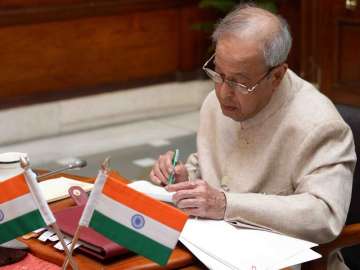India took a decisive step towards a possible July 1 rollout of the Goods and Services Tax (GST) with President Pranab Mukherjee today giving his nod to four supporting legislations related to the new tax regime.
The legislations were The Central GST Act, 2017, The Integrated GST Act, 2017, The GST (Compensation to States) Act, 2017, and The Union Territory GST Act, 2017, officials said today.
All the bills detailing the provision of single tax regime that will replace multiple state and central taxes to create one national market, were passed by the Parliament in the recently concluded Budget session.
The bills were cleared by the Rajya Sabha after negation of a host of amendments moved by the opposition parties on April 7. The Lok Sabha had passed these bills on March 29.
The GST Council, the constitutional body created for this tax, has approved a for rate structure – 5 per cent, 12 per cent, 18 per cent and 28 per cent – with most goods likely to fall in the 12 per cent and 18 per cent rate.
In addition, a cess will be levied on luxury and sin goods as well. The law provides for a maximum GST rate of 40 per cent (20 per cent central GST and 20 per cent state GST).
The council will meet later this month to take up the last remaining issue of fitting individual goods and services to various tax rates.
Latest Business News
